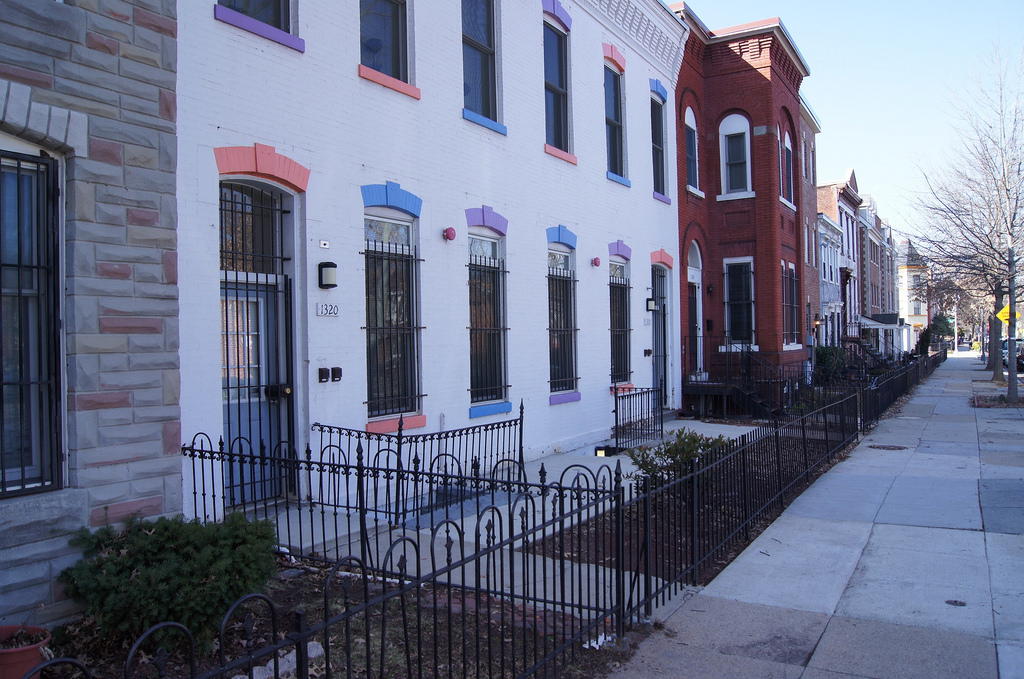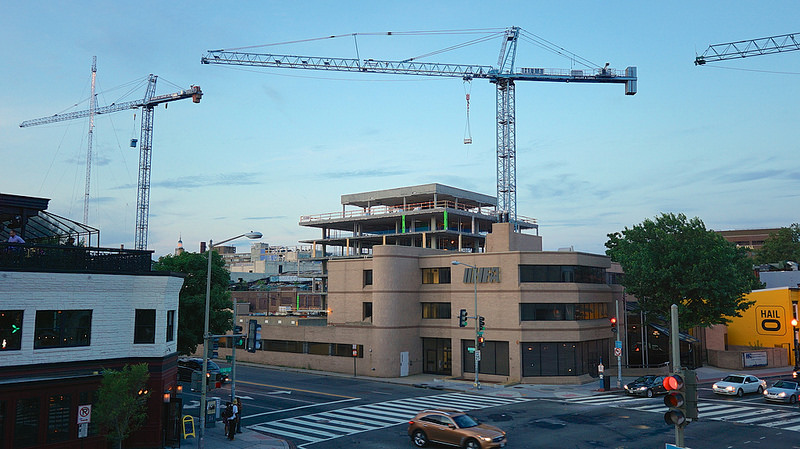City Observatory has long challenged the popular narrative about the nature and effects of gentrification. This is the first installment of a three-part commentary by our friend and colleague Alex Baca. Parts two and three are available as well. Alex Baca has worked in journalism, bike advocacy, architecture, construction, and transportation in D.C., San Francisco, and Cleveland. She’s written about all of the above for Washington City Paper, CityLab, Slate, The American Conservative, Cleveland Magazine, Strong Towns, and Greater Greater Washington.
In Race, Class, and Politics In the Cappuccino City, Derek Hyra claims to invent a new lens through which to assess gentrification in rapidly upscaling cities, using Washington, D.C.’s Shaw neighborhood as the ground for his ethnographic research. But his conclusions are substandard repackagings of existing scholarship, and mislead those interested in housing policy—at a time when we desperately need clarity.
In the next few days, City Observatory will address how Derek Hyra’s Race, Class, and Politics in the Cappuccino City doesn’t stick its landing. This first installment discusses the conflicts within the structure of Hyra’s arguments, which reappropriate longstanding academic terms to culminate in his coinage of the sensationalist term “living the wire.”
Part I: A New Premise?
Discussing gentrification, a term affixed to so many things that its intrinsic meaning is nearly meaningless, does not often result in cohesive and objective narratives. So it’s remarkable that the April 2017 release of Derek Hyra’s Race, Class, and Politics In the Cappuccino City spurred something of a thematically unified discussion around neighborhood change both locally within Washington, D.C., and at a national level.
Hyra, an associate professor at American University’s School of Public Affairs who heads its Metropolitan Policy Center, received a great deal of attention last year for his splashy retelling of the process of gentrification in Shaw, a center-city neighborhood in D.C.: from The Washington Post, from NPR, from DCist. Washington Business Journal, Next City, and Greater Greater Washington lent their platforms to excerpts of Hyra’s book. Shelterforce ran a flattering review of Cappuccino City, while CityLab published the requisite Q&A. D.C.’s NPR-affiliate institution The Kojo Nnamdi Show broadcast a live discussion with Hyra in May, and, in the following months, his speaking engagements in the D.C. area and beyond did not slow. Hyra’s coinage of “living the wire”—which is, as his publisher puts it, when “whites in their 20s and 30s seek[ing] the titillation of living in a community with a hint of the urban grit of the Baltimore ghetto portrayed in the TV series The Wire”—is too slick of a shorthand not to catch on in a media environment that treats high rents as a symptom of fancy toast.

In both Cappuccino City and The New Urban Renewal, his 2008 book on gentrification in Bronzeville and Harlem, Hyra favors ethnography, a qualitative research method designed to explicate social and cultural interactions. The strongest ethnography is longitudinal, allowing researchers to deeply and seriously engage with their subjects repeatedly over time to draw out personal stories—in all their complications and contradictions—that may not be so richly illustrated through data analysis alone. Ethnography, from Tally’s Corner and All Our Kin to Gang Leader For a Day and On the Run to, yes, even Second Life, has long been deployed by academics to understand the nuances of human interaction.
Cappuccino City opens with a literature review. In it, Hyra purports to operate on a different level than typical gentrification texts, which often settle into two camps: production (which, in his words, “tend[s] to assume that public policies and economic circumstances encourage investments and attract newcomers to once economically neglected communities”) and consumption (wherein those identified as gentrifiers drive the process through their tastes as consumers). Because, in Hyra’s assertion, “we know much less about how global and federal forces interact to explain urban redevelopment patterns, and why upper-income Whites are now attracted to formerly low-income African American communities,” he attempts to create his own scholastic space midway between consumption and production theory. Hyra’s work is based nearly entirely, with the exception of some data tables in Cappuccino City’s appendix, on his recorded interactions with Shaw residents in restaurants, community centers, and on basketball courts.
Hyra uses two structural devices to draw out his argument. The first is the illustration of the “gilded ghetto,” a term initially used by Kenneth B. Clark in Dark Ghetto to equate pathologies ascribed to “inner-city Black spaces” to those “of the affluent in the segregated White suburbs,” such as “an emptiness reflecting a futile struggle to find substance and worth through the concretes of things and possessions.” Hyra warps Clark’s original intent of the “gilded ghetto” for his thesis, using it “not as a reference to suburban challenges or pathologies but rather to indicate the intricate social and economic redevelopment processes, and outcomes, associated with the twenty-first-century transformation of second ghettos”:
“Once places where poverty, drugs, and violence proliferated, these areas have become spaces where farmers’ markets, coffee shops, dog parks, wine bars, and luxury condominiums now concentrate. The transition of American urban ‘no-go’ Black zones to hip cool places filled with chic restaurants, trendy bars, and high-priced apartment buildings defines the gilded ghetto. My contemporary use and redefinition of the gilded ghetto both references and explains what happens when those who, in the past, would have settled in the suburbs instead choose to reside in the dark ghetto” (7).
This has, in Hyra’s telling, happened as a result of consistent, calculated efforts of “black branding” on the part of privileged neighborhood stakeholders. He argues that those efforts, such as Cultural Tourism DC’s development of the Shaw Heritage Trail signage, occurring in concert with relatively wealthier, whiter, better-educated individuals choosing “to reside in an ‘authentic’ urban community whose energy and edge are based on preexisting stereotypes of the iconic Black ghetto, where Blackness, poverty, and crime are associated with one another” (19), results in “living the wire.” Hyra’s pairing of “living the wire” with “black branding” is Cappuccino City’s second structural device, and the book’s primary explanation for why white people choose black neighborhoods.

If production scholarship—once again, in Hyra’s definition—“tend[s] to assume that public policies and economic circumstances encourage investments and attract newcomers to once economically neglected communities,” then the reappropriation of “gilded ghetto,” alongside his twin justifications of “black branding” and “living the wire,” looks straightforwardly consumptive, resting on the theory that “cultural tastes and preferences shape gentrification patterns.” Despite Hyra’s claims to create a new paradigm, Cappuccino City operates firmly within the boundaries of the consumption premise of gentrification, conforming to the popular notion that cocktail bars, restaurants of a particular caliber, boutique shops, and the people who frequent them are drivers of gentrification.

